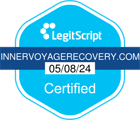Prescription drugs are designed to treat specific medical conditions and should only be used as prescribed by a healthcare professional. However, some individuals may engage in the misuse of these medications, unaware of the serious consequences for their health and well-being. Here is some information about prescription drugs and their potential for abuse in the wrong circumstances.
How Are Prescription Drugs Abused?
Prescription medications are typically available in pill, capsule, or liquid formulations and are administered orally. The misuse of prescription drugs encompasses three main behaviors:
- Deviating from the prescribed method or dosage of medication
- Consuming medication that has been prescribed to someone else
- Taking medication with the intention of experiencing its psychoactive effects
If any of the behaviors above describe you or someone you know, speak to a licensed addiction specialist or seek treatment from a prescription drug rehab center as soon as possible.
Types of Prescription Drugs at Risk for Abuse
Prescription drugs often include concentrated ingredients that may produce psychoactive (mind-altering) effects, which is the primary reason for their misuse. There are three primary categories of drugs that are frequently subject to abuse:
- CNS depressants
- Stimulants
- Opioids
CNS Depressants
Central Nervous System (CNS) depressants encompass a range of prescription drugs, such as sedatives, tranquilizers, and hypnotics. These medications have the ability to decrease brain activity, which makes them valuable in the treatment of conditions such as anxiety, panic disorders, acute stress reactions, and sleep disorders.
However, when an individual uses CNS depressants over an extended period, it is possible that they may require higher doses in order to achieve the desired therapeutic effects. Prolonged usage of this product may result in the development of dependence and withdrawal symptoms if the usage is suddenly reduced or discontinued.
When individuals experience a CNS depressant overdose, it is common for breathing to slow down or cease entirely.
Common CNS depressants include:
Xanax® (Alprazolam)
Xanax is a benzodiazepine prescribed to treat certain anxiety and panic disorders. However, excessive or non-prescribed use of this medication can cause memory impairment, suicidal ideation, and paranoia, among other symptoms. Taking Xanax in combination with other substances, such as alcohol, can cause breathing problems or death.
Valium® (Diazepam)
Valium is used to treat anxiety, acute seizures, muscle spasms, and even alcohol withdrawal. Sometimes, Valium may be given before anesthesia during a surgical procedure. Similar to Xanax, benzodiazepines like Valium can cause life-threatening side effects when combined with alcohol or other drugs.
Stimulants
Prescription stimulants are drugs used to treat conditions including narcolepsy, in which the patient has sudden and uncontrolled bouts of sleepiness, and attention-deficit hyperactivity disorder (ADHD). Prescription stimulants have the ability to enhance the activity of brain chemicals such as dopamine and norepinephrine. Dopamine plays a crucial role in the reinforcement of rewarding behaviors, while norepinephrine has a significant impact on various physiological processes within the body, such as blood pressure, heart rate, and respiratory function.
When taken in high doses, prescription stimulants can potentially result in severe health complications, such as elevated body temperature, irregular heartbeat, cardiac failure, and seizures. It is crucial to exercise caution and adhere to prescribed dosage guidelines to minimize any potential risks associated with these prescription drugs.
Common stimulant prescription drugs include:
Ritalin® (Methylphenidate)
Ritalin is prescribed for the treatment of attention deficit hyperactivity disorder (ADHD) in both children and adults, as well as to help individuals reduce impulsivity and hyperactivity. On the other hand, it is also classified as a Schedule II substance as defined by the Controlled Substances Act. Substances classified as Schedule II drugs, such as cocaine and methamphetamine, possess a significant risk for abuse.
Adderall® (Amphetamine/Dextroamphetamine)
Adderall is a medication that is prescribed for the treatment of ADHD and narcolepsy. However, there is significant misuse of Adderall by individuals who do not possess a valid prescription for this medication. This may be primarily due to the fact that Adderall contains amphetamine, a powerful stimulant substance.
Opioids
Prescription opioids are commonly prescribed to manage moderate to severe pain, particularly after surgical procedures, injuries, or in cases of health conditions like cancer.
Receptors are natural chemical structures that send messages throughout your body, and they play a significant role in regulating sensations of pain and pleasure. When opioids bind to these receptors, they effectively inhibit the transmission of pain signals from the brain to the body. Additionally, they stimulate the release of significant quantities of dopamine throughout the body. However, this release has the potential to reinforce drug usage, which can put the patient at risk for addiction.
When an individual engages in the improper use of a prescription opioid, they may choose to orally ingest the medication in its intended form. People may also sometimes smash tablets or open capsules, dissolve the powder in water, and then inject the liquid into a vein. In addition, there are individuals who choose to inhale the powder.
Overdosing on opioid prescription drugs often results in slowed or stopped breathing. As a result, insufficient oxygen supply to the brain can lead to severe consequences such as a coma, irreversible brain damage, or even death.
Common opioid prescription drugs include:
OxyContin® (Oxycodone)
OxyContin is an opioid analgesic (painkiller) typically produced in extended-release tablet or capsule form. This method of delivery carries the potential for users to develop opioid addiction, abuse, and misuse. Additionally, it increases the risk of overdose and potential fatality due to the higher concentration of oxycodone present in the medication.
Percocet® (Oxycodone/Acetaminophen)
Percocet consists of a combination of acetaminophen and oxycodone. Acetaminophen is a pain reliever with less potency that can, however, enhance the effects of oxycodone. This prescription drug carries a high risk for addiction and dependence. Furthermore, the consumption of this substance in excessive amounts or in conjunction with other substances, such as alcohol or illegal drugs, can lead to severe respiratory complications and even death.
Know Where to Find Prescription Drug Rehab in Atlanta, GA
If you have any concerns or questions regarding your prescription drug medications, consult with a healthcare professional who can provide you with appropriate guidance and support. Prescription medications may be just as harmful to a person’s health and life as illicit drugs. If you believe that you or someone close to you may be at risk of prescription drug addiction, know there is help available.
At Inner Voyage Recovery Center, our prescription drug rehab programs in Atlanta, GA, are personalized to meet each individual’s needs, offering effective holistic modalities to help you champion a lifestyle without the need for substances.
If you have any questions or would like to learn more about our programs, our helpful admissions team is here to assist you. Contact us today at (470) 523-4606.




